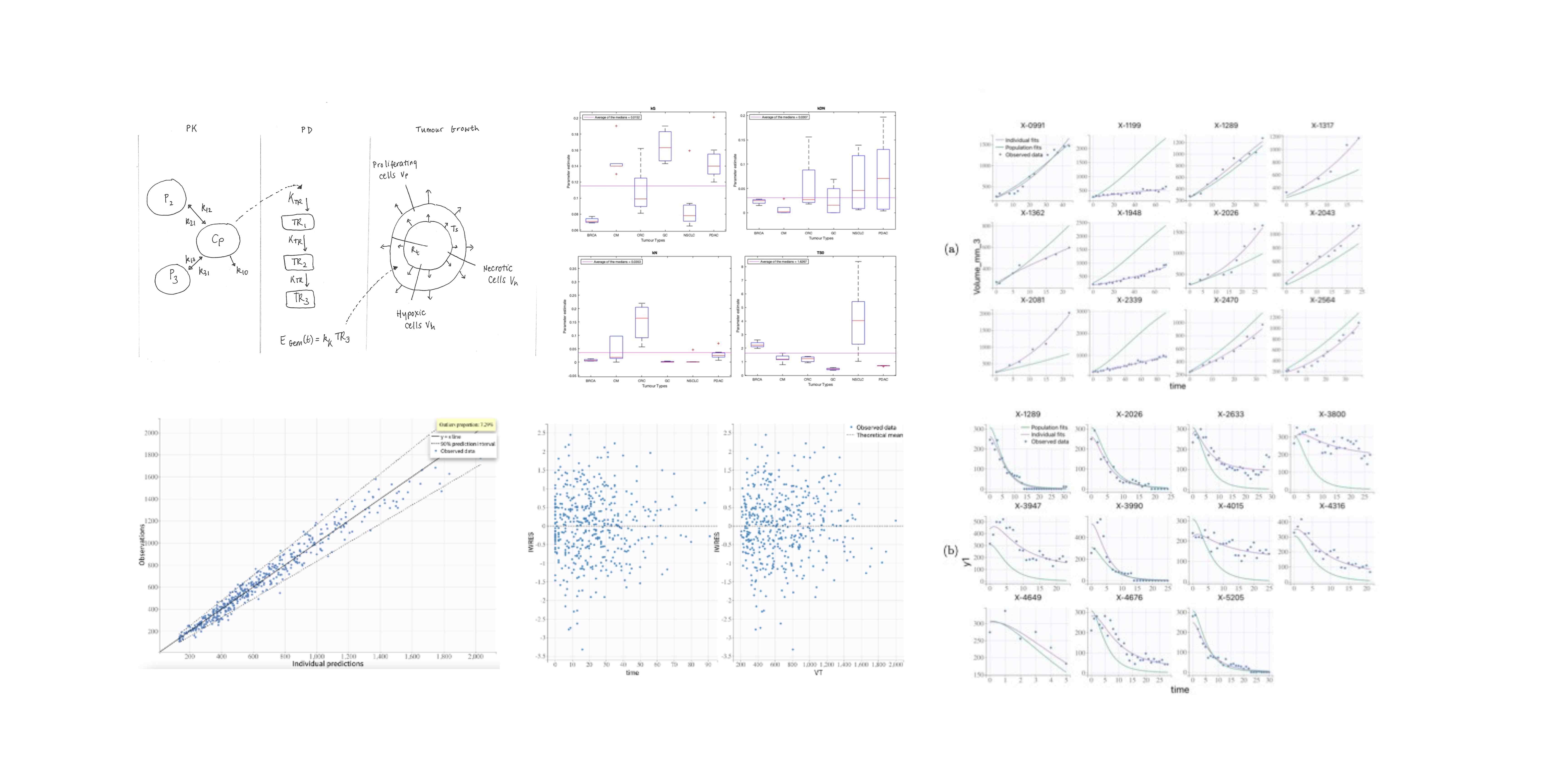Modelling tumour growth as a means to predict chemotherapy agent effects in humans

Project information
This technical project was completed over a period of 6 months for the degree of Masters of Systems Engineering.
Over the period of these 6 months, I investigated and refined the existing Warwick-AstraZeneca tumour growth model and combined it with a pharmacokinetic-pharmacodynamic (PKPD) model of an anti-cancer agent to predict chemotherapy agent effects.
Some of my key accomplishments of the project include:
- • Adapted quickly when implementing the models onto new mathematical modelling software, Monolix.
- • Extracted, analysed, and organised a large secondary published dataset using Microsoft Excel and Monolix.
- • Wrote a 40-page technical report, a 5-page project evaluation, and a weekly (24 week) project logbook.
- • Achieved a high First-Class mark of 82% for my project and time management skills.
Overall, this project has equipped me with the much-needed skills to learn unfamiliar software, enhance my problem and project management skills, and quickly adapt to changes - all of which are directly applicable to the real working world. Within the scope set, the primary aim of this project – to provide more insight into the growth of a human tumour, using mathematical modelling tools on an existing tumour growth model, applied to data from xenograft studies; and to further the study of the distribution and impact a chemotherapy agent in humans – was achieved to a meaningful and large extent.